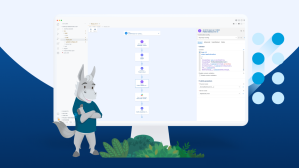AI usage is up 23% since the beginning of the year, according to Slack’s new Workforce Index, and excitement among workers is growing. Nearly half (47%) of global office workers expressing enthusiasm about using AI in their daily work (up 9% since January). The survey also reveals that, without the necessary training and guidance, employees may not fully capitalize on the efficiencies gained from AI. Instead of allocating the time saved by AI toward strategic or high-value activities like learning and skill building, employees are likely to spend 37% more of their time on routine administrative tasks.
Why it matters: 82% of workers are at risk of burnout this year. With the advent of AI, many workers thought days of busywork were finally over. But because of persistent training and trust issues, today’s employees still aren’t unlocking AI’s benefits.
In fact, the new survey shows that workers plan to focus their free time on the very tasks they should be delegating to AI, while pushing high-value focus areas like innovation, creativity, and professional development down the list. On the bright side, those who are trained to use AI are up to 19x more likely to report that AI is improving their productivity.
The Slack survey found:
Desk workers suffer from busywork and burnout: Workers are feeling the grind and report spending large chunks of their day on mundane tasks.
- Most desk workers (64%) experience burnout once a month or more.
- About a third of workers say they are regularly stressed.
- 30% of workers do not feel passion for their job.
- People spend a third of their day on tasks that are “not meaningful to their job,” such as unnecessary meetings, low-value emails, and excessive paperwork or data entry.
AI excitement and adoption is on the rise: Workers are embracing AI more all the time and are increasingly excited about using it in their daily work.
- AI use among all desk workers is up 23% since January and 60% since September.
- Nearly half (47%) of global desk workers express enthusiasm about AI handling tasks from their jobs.
Despite AI’s promise to reduce busywork, workers continue to prioritize admin over high-value work: When asked how workers plan to spend their time saved by AI — the answer wasn’t promising.
- The top activity workers expect to prioritize with the time saved by AI is administrative tasks.
- High-value, professional development tasks like innovating, creating, and networking with colleagues sat further down on the list. In fact, workers are likely to spend 37% more of their time on administrative work than these tasks.
Trust and knowledge gaps hold workers back from fully leveraging AI: Workers are excited about AI but don’t yet trust it to take over tasks at work.
- 93% of global desk workers do not consider AI outputs completely trustworthy for work-related tasks.
- Only 15% of workers strongly agree that they have the education and training necessary to use AI effectively.
Businesses must empower their workforce to use AI effectively: For workers to trust and delegate tasks to AI, companies must train their workforce on how to get the most out of it.
- Guidance: Desk workers at companies that have established permissions for AI use are nearly 6x more likely to have experimented with AI tools.
- Training: Those who are trained to use AI are up to 19x times more likely to report that AI is improving their productivity.
Salesforce perspective: “We’re at a crucial turning point with AI. If we want to make the most of what AI can offer without just ramping up stress and burnout, it’s on us as leaders to equip our teams with tools they can trust and help employees steer that extra time into the most rewarding work.” – Christina Janzer, Head of Slack Workforce Labs
If we want to make the most of what AI can offer without just ramping up stress and burnout, it’s on us as leaders to equip our teams with tools they can trust and help employees steer that extra time into the most rewarding work.
Christina Janzer, Head of Slack Workforce Labs
More information:
- Despite AI enthusiasm, Workforce Index reveals workers aren’t yet unlocking its benefits
- Find more stats and data on worker AI adoption in the Salesforce stat library
The survey included 10,045 workers in the United States, Australia, France, Germany, Japan, and the U.K., and was fielded between March 6 and March 22, 2024.
The survey was administered by Qualtrics and did not target Slack or Salesforce employees or customers. Respondents were all desk workers, defined as employed full-time (30 or more hours per week) and either having one of the roles listed below or saying they “work with data, analyze information or think creatively”: executive management (e.g. president/partner, CEO, CFO, C-suite), senior management (e.g. executive VP, senior VP), middle management (e.g. department/group manager, VP), junior management (e.g. manager, team leader), senior staff (i.e. non-management), skilled office worker (e.g. analyst, graphic designer).















